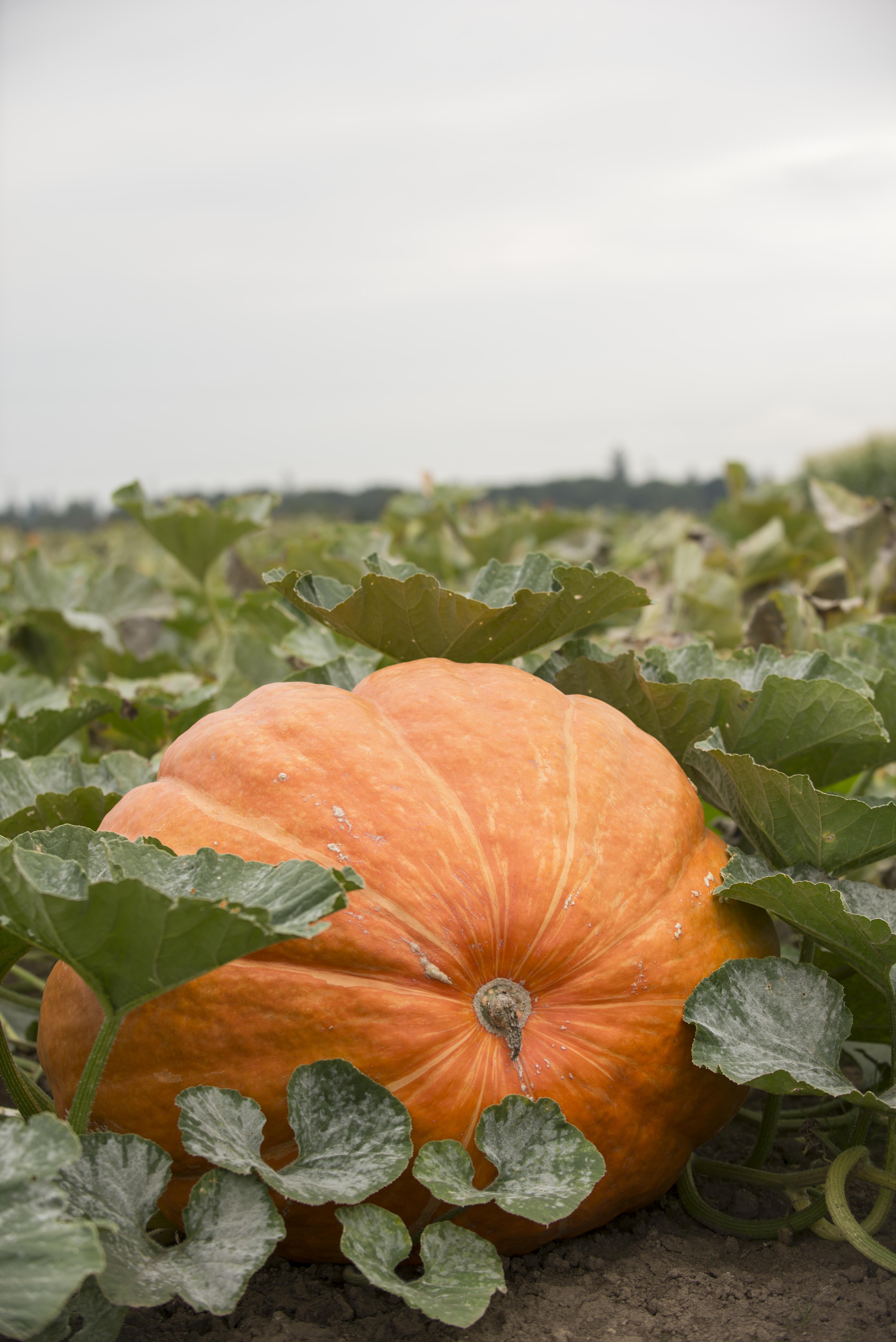One small seed is all it takes to produce the gigantic pumpkins entered in fierce competitions around the world, including the record set in 2016 with a 2,624.6-pounder that weighed almost as much as a Volkswagen bug.
Maybe you won’t achieve quite that size but plant ‘Dill’s Atlantic Giant’ and you’ll grow a whopping pumpkin, said Jim Myers, a vegetable breeder for Oregon State University.
“I’ve had these types growing in fields and without doing anything special to them I’ve gotten 400-pounders,” he said. “They certainly need plenty of water and lots of space to grow. People who grow them competitively have their own secret formulas that they don’t talk about and use different strategies. It’s a very small group that does it competitively and they’re very fanatical about it.”
Modern monster pumpkin genetics go back to grower Howard Dill, a Nova Scotia farmer who spent 30 years selectively breeding giant pumpkins. He came up with ‘Dill’s Atlantic Giant’ – and every world champion since has come from offspring of those seeds.
Dill reinvigorated giant-pumpkin competitions in 1978 by breaking a 75-year-old record set in 1903 by William Warnock, whose 403-pound oddity was then displayed at the 1904 World’s Fair in St. Louis. Dill’s champion 438.5-pound pumpkin sounds wimpy next to those grown today, but it was outlandish enough to gain a spot in “Ripley’s Believe It or Not.” Dill held the world record four years straight and landed in the Guinness World Records book in 1981 with a 493.5-pounder.
To grow a monster pumpkin, it takes a monster amount of land, water and fertilizer. A single pumpkin can cover 1,200 square feet and the big boys need up to 500 gallons a week. If you’d like to try, Myers offered the following advice:
- Use ‘Dill’s Atlantic Giant’ seeds. Competitive growers seek out offspring of the champions, but be aware seeds are expensive – a single seed of a champion has been auctioned for as much as $1,600. For beginners, find seed online from local mail-order nurseries Territorial Seed Co. and Nichols Garden Seed for significantly cheaper.
- Germinate monster pumpkin seeds at air temperatures of 65 to 75 degrees and soil temperatures of 70 to 90 degrees.
- Grow pumpkins indoors from seed and move the starts to your garden about five to seven weeks later. Plant in late May after the last frost.
- Full sun is important – avoid sites with full or partial shade.
- Avoid soil compaction in the field. Some growers use stepping stones or boards to minimize impact during the season.
- Place plastic around the base of the pumpkin about two weeks before planting to bring the soil temperature to about 60 degrees. A high tunnel or hoop house can also be used, especially during the early part of the season to create a warmer environment for the plant.
- Provide your pumpkin with plenty of room to spread – a single plant may use as much as 1,200 square feet, or roughly a 40-foot diameter circle.
- Remove enough flowers and fruit – pumpkins are actually fruits – to force the plant to put all its energy into producing one behemoth fruit instead of lots of smaller fruits.
- Hand-pollinate pumpkins to increase the number of seeds that develop and the likelihood for bigger fruits. Pull off the petals of male flowers, which look like straight stalks, and dab these on the female flowers, which have little round ball-shaped ovaries at their base.
- Give pumpkins 130 days or more to mature. Because of this, they are best suited to western Oregon.
- Check soil daily. The ground needs to be evenly moist – but not soggy – at all times. Keep water off foliage to discourage disease.
- Apply aged manure in fall or in spring put down compost, up to 5 cubic yards per plant. Then use a fertilizer periodically through the season. Apply lime in fall to bring soil to a more neutral pH if a test determines it is on the acid side. Fertilize every two weeks or so with decomposed manure, compost or fertilizer.
- Maintain a weed-free area around plants.
- Stake down or bury leaf nodes along the vine. These will root and help prevent wind from rolling the vines.
- You can place the growing pumpkin on a large piece of cardboard or piece of wood to repel soil-dwelling insects.
- As the fruit gains size, shade it to prevent scalding and reduce overheating. The skin will also remain more flexible and the fruit will be less likely to split.
- Harvest your pumpkin at the end of the season just before the first frost. It won’t color to the bright orange of a jack-o’-lantern type, but it will appear pale yellow to orange-ish red when it is ready.
- To qualify as a pumpkin and not a squash, the surface area must be shaded red, pink or yellow, rather than blue, gray or green.
- At harvest time, be careful that the pumpkin does not develop cracks, which will disqualify you in competitions.
After you’ve entered your pumpkin in weigh-off competitions, you might be able to sell it to businesses. Casinos or restaurants will sometimes purchase a champion and contract with a professional pumpkin carver to create a short-lived sculpture, Myers said. Or you can roast the seeds. Be forewarned, though, the flesh is not very palatable.
“It’s something that’s interesting to do. There’s not a lot of practicality. There might be a little prize money and it’s good for notoriety,” Myers said.

